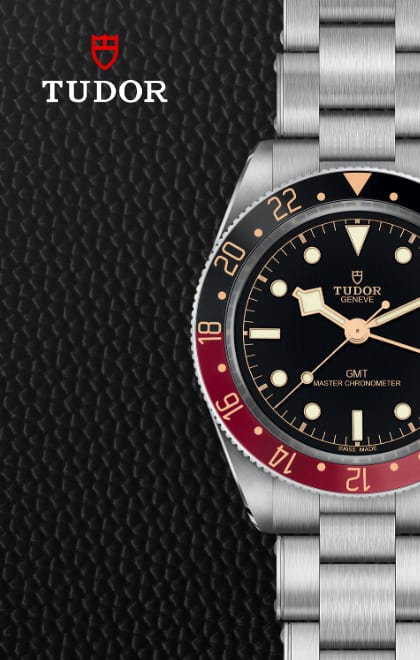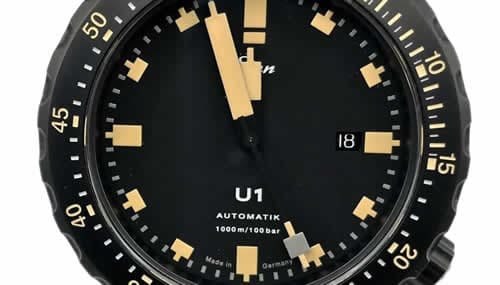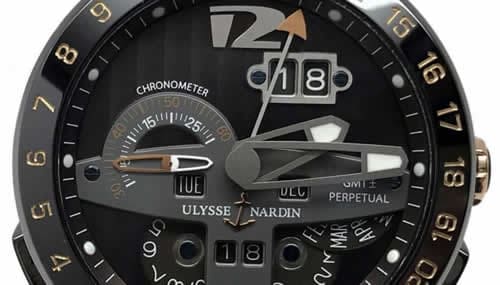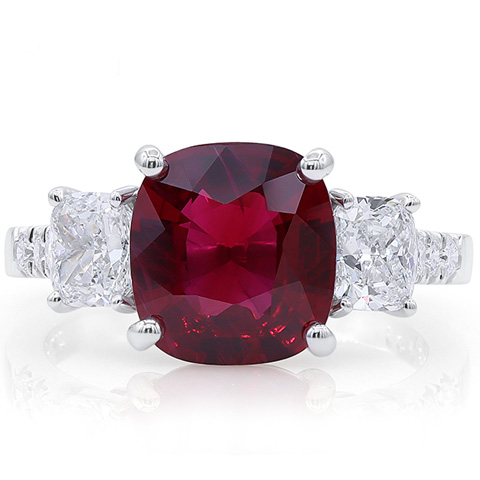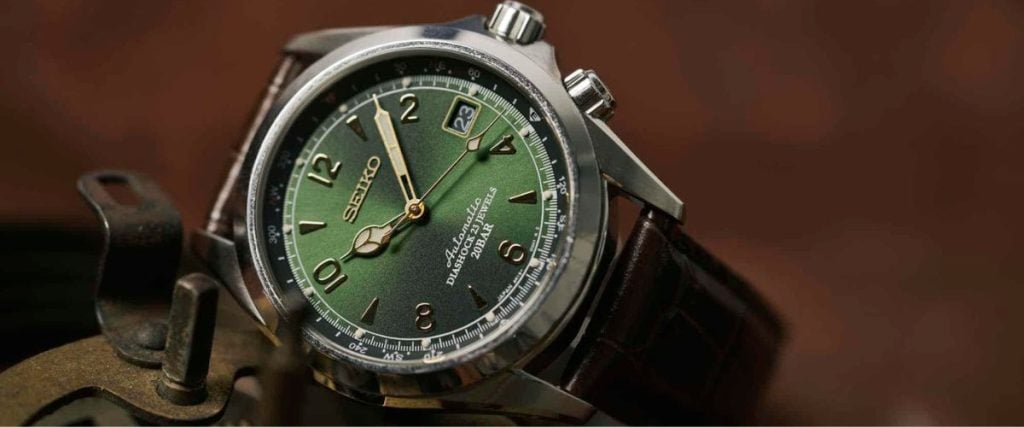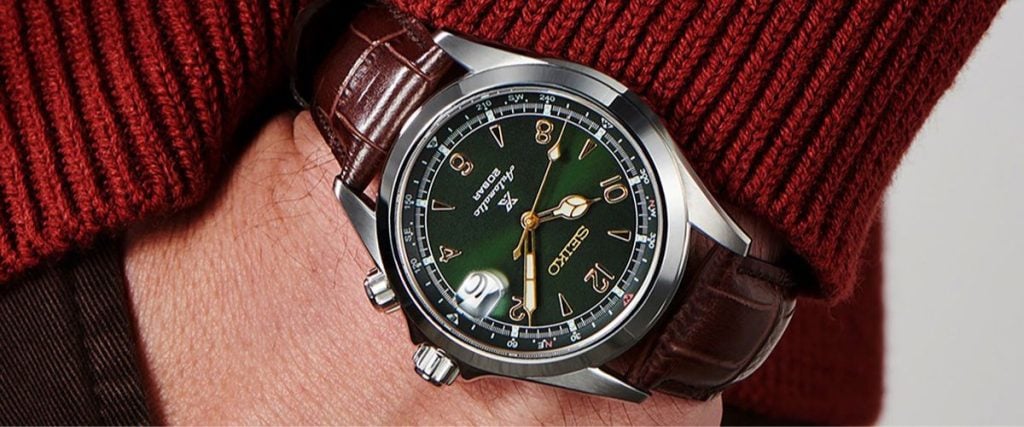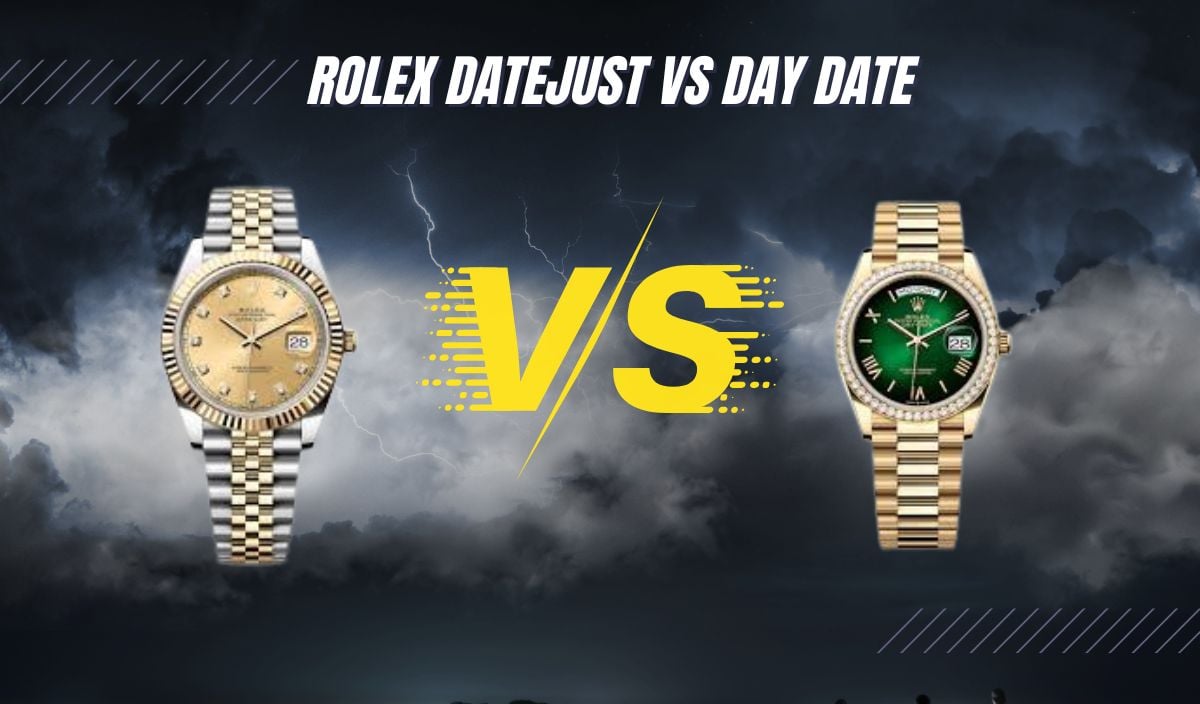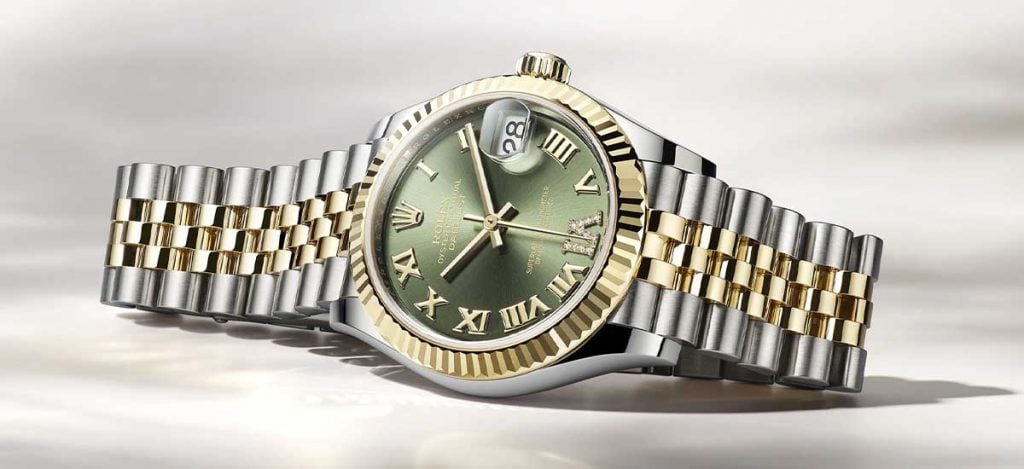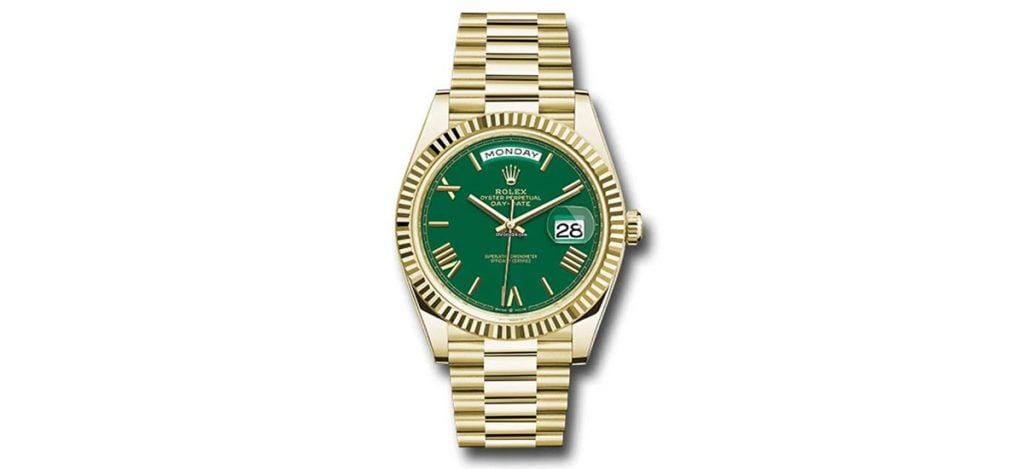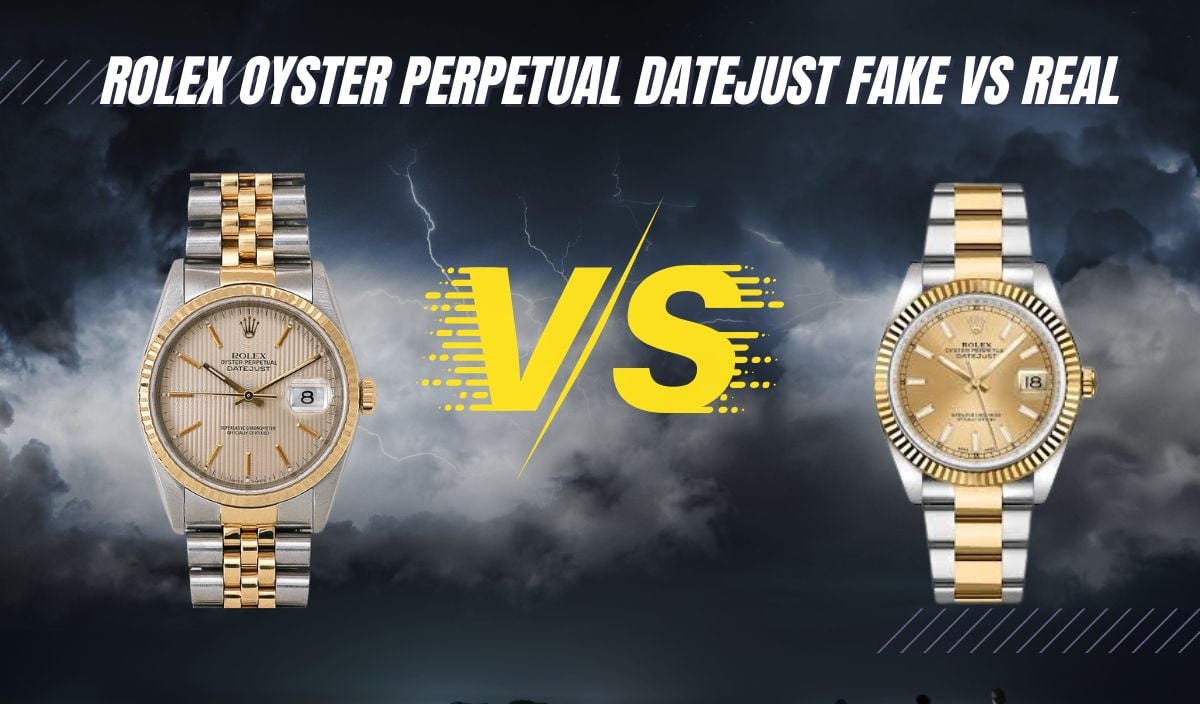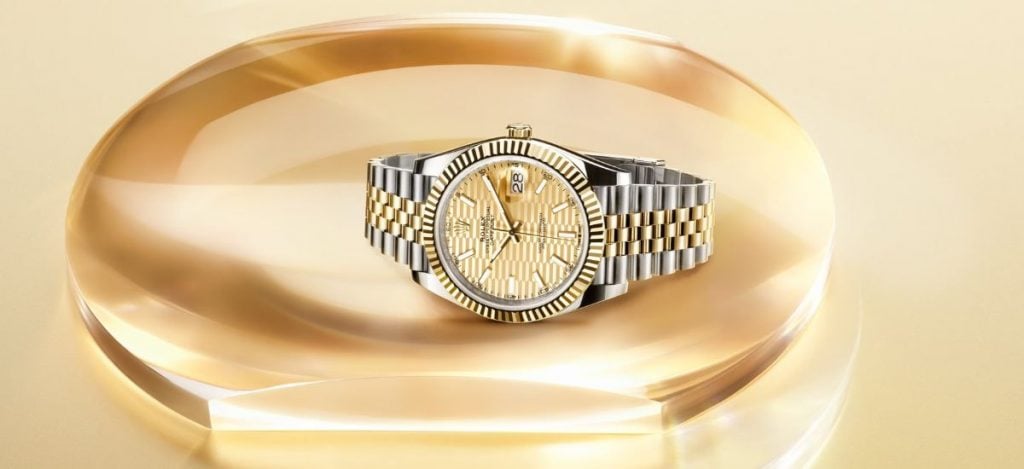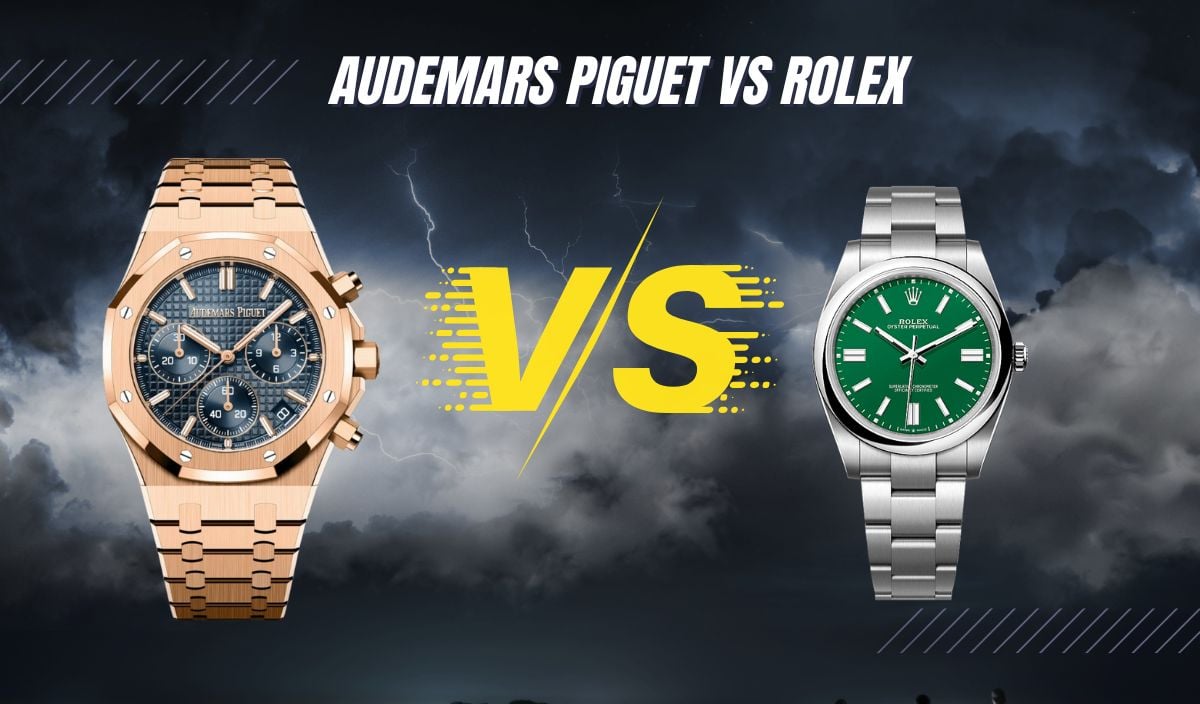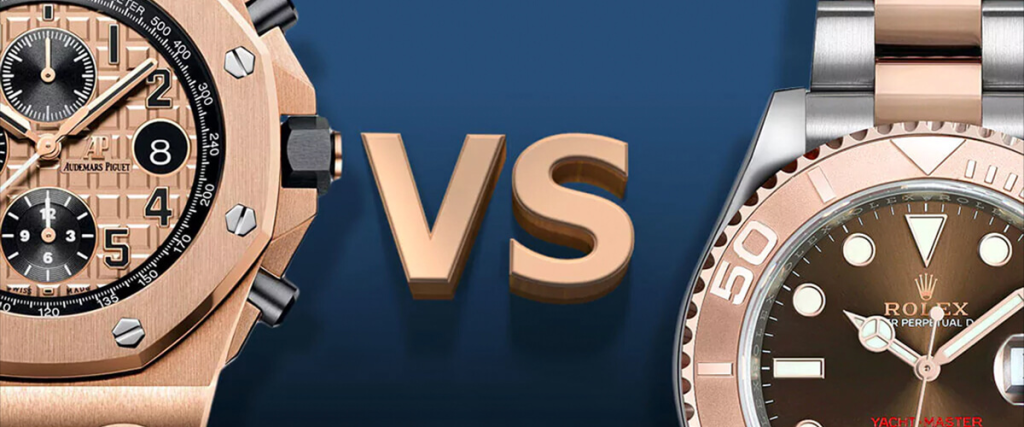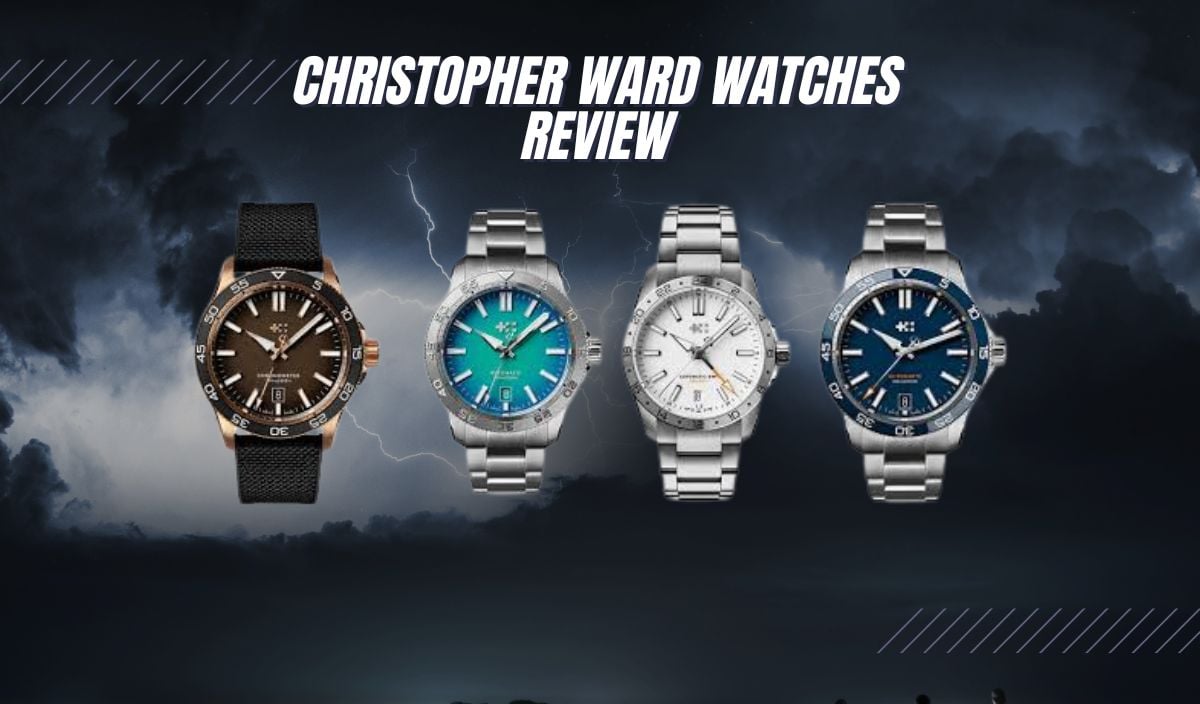
As a British watch collector, I’ve always had a soft spot for homegrown horological talent. There’s just something special about rooting for brands that are close to home, especially when the global watchmaking heavyweights from Switzerland and Germany tend to dominate the scene.
Don’t get me wrong, I love a good Swiss watch as much as the next collector, but there’s a unique thrill in seeing a British brand carve out its place in a saturated industry.
That’s exactly why Christopher Ward has been on my radar for years. Back in the day, they were the definition of a microbrand.
They started as a relatively small team that was just excited to be making watches on British soil. But that did mean very few of my international watch-collecting friends had ever heard of them.
But it’s safe to say that’s now all changed. Today, Christopher Ward is no longer a secret, especially since winning the 2023 Grand Prix d’Horlogerie de Genève (GPHG) with their stunning C1 Bel Canto and releasing affordable designs like The Twelve and Sealander.
They’ve gone global in a big way. But, if you’re still unfamiliar with the name or just curious to know more, I’m excited to take you through everything there is to know about Christopher Ward.
I’ll be looking back at their humble beginnings to the current collections and discussing whether a Christopher Ward watch is right for your wrist.
History of Christopher Ward Watches
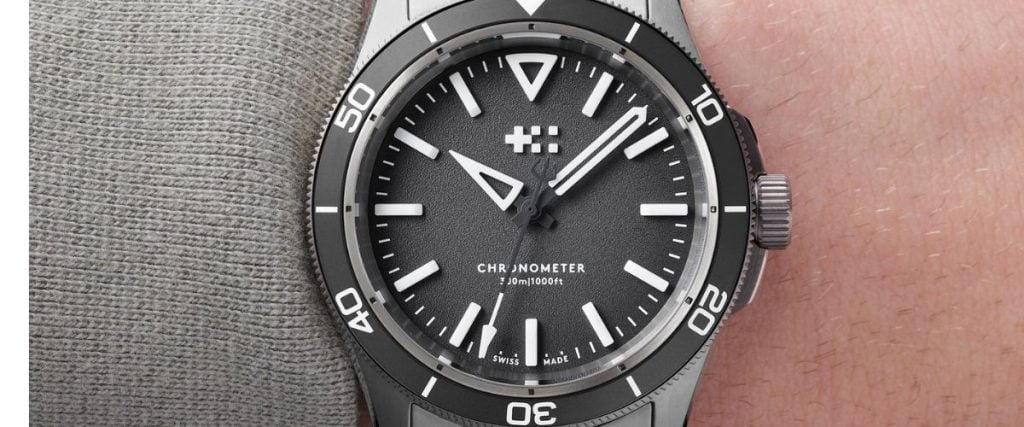
Back in 2004, three friends—Mike France, Peter Ellis, and Chris Ward—were floating down the Thames, brainstorming ideas for their next venture.
They’d just left their previous gigs and decided it was time to create something new. Watches, it turns out, was a shared passion and was a world they believed they could actually break into, despite the mass of popular brands already out there.
At the time, Swiss luxury brands dominated the market with astronomical markups and heavily marketed prestige. So Mike, Peter, and Chris saw an opportunity to shake things up.
They envisioned a watch brand that skipped the glitzy marketing and sold directly to customers online, making high-quality timepieces that didn’t break the bank. And so, from a humble chicken shed in Berkshire, the Christopher Ward brand was born.
Their first two watches, the C5 Malvern Automatic and the C3 Malvern Chronograph, were launched in 2005. The startup had no physical storefront and instead relied on a single ad in The Independent newspaper and their fledgling website.
Sales were slow at first, but after a review mentioned their C5 and described it as the “best-value mechanical watch in the world”, all of a sudden, the little British watch brand was on the map.
By 2008, Christopher Ward had partnered with Swiss watchmakers Synergies Horlogères, giving them access to bespoke craftsmanship and expertise.
This collaboration led to innovations like the JJ Calibres and, in 2014, the game-changing Calibre SH21, a 5-day power reserve movement. It was the first commercially viable in-house movement from a British watch brand in over 50 years, cementing Christopher Ward as a real disruptor.
Fast forward to today, and Christopher Ward has transformed into a global name in watchmaking. Their headquarters in Maidenhead, UK, and manufacture in Biel, Switzerland, ensure the perfect blend of British design and Swiss precision.
The brand has grown its catalog to include collections like the C60 Trident, Aquitaine, and Sealander, appealing to everyone from first-time buyers to seasoned collectors.
They’ve also evolved their branding, ditching the full “Christopher Ward” text on dials in favor of the sleek twin-flags logo. This change wasn’t just cosmetic but was also designed to represent the dual British-Swiss heritage.
The real tipping point for Christopher Ward, though, at least in my eyes, was when they won the 2023 Grand Prix d’Horlogerie de Genève (GPHG) award for their C1 Bel Canto.
This innovative chiming watch is remarkably affordable, considering it houses a chiming complication and remains one of the British watchmaker’s most coveted designs.
And with other models like The Twelve and C1 Moonphase more recently hitting virtual shelves, Christopher Ward has made it clear they’ve outgrown their microbrand roots.
Popular Christopher Ward Collections
Bel Canto

As I hopefully made clear in the introduction, the Christopher Ward Bel Canto remains the brand’s most transformative piece that catapulted the British watchmaker into the limelight.
Powered by the innovative FS01 module atop the reliable Sellita SW200-1 movement, it produces an hourly chime. This alone is a rare sight in watches, but especially at a price point of $4,000.
Housed in lightweight Grade 5 titanium, the watch is both durable and elegant, with a 41mm case that’s been masterfully sculpted to reduce visual heft.
This balance of design ensures a comfortable, unobtrusive wrist presence. Its centrepiece, though is the vibrant sunburst dial that rivals even those on high-end luxury timepieces.
It’s visually captivating without being overly complicated, with a symmetrical dial-side chime mechanism and polished, chamfered details.
The Twelve
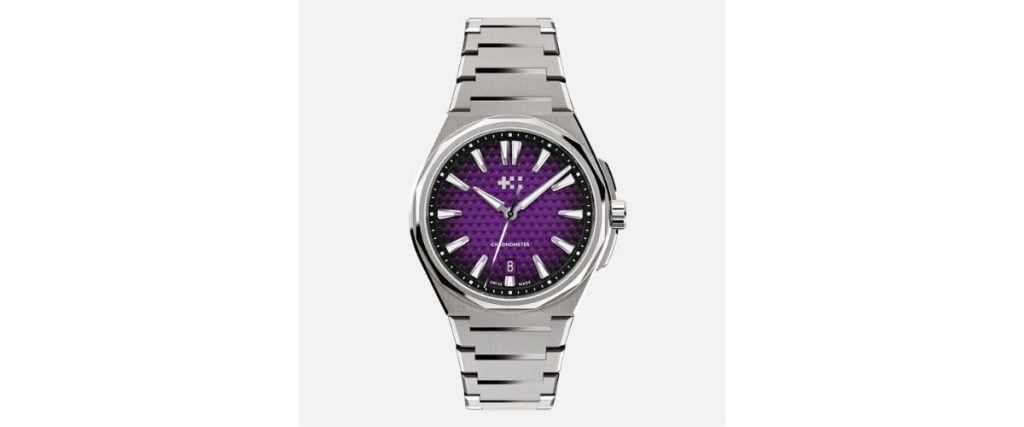
Christopher Ward’s The Twelve collection is a personal favorite of mine and a watch I’ve owned for a little over a year now. It’s one of the few affordable integrated sports watches on the market available in both 40mm and 36mm and in steel or titanium.
Its most defining feature, and the very thing it’s named after, is the bezel. It has twelve sides and is meticulously triple-finished for depth and dimension.
Dial textures vary across models, from glacier blue to nebula purple, each adorned with Christopher Ward’s signature cross-flag pattern.
The steel models house the Sellita SW200 movement, while the titanium models feature a thinner, chronometer-certified SW300, reflecting thoughtful tiered offerings.
With a starting price of $995, The Twelve bridges the gap between haute horology and everyday luxury, making it a formidable contender for anyone wanting an integrated sports watch that doesn’t have the price tag of a Royal Oak or Nautilus.
Trident
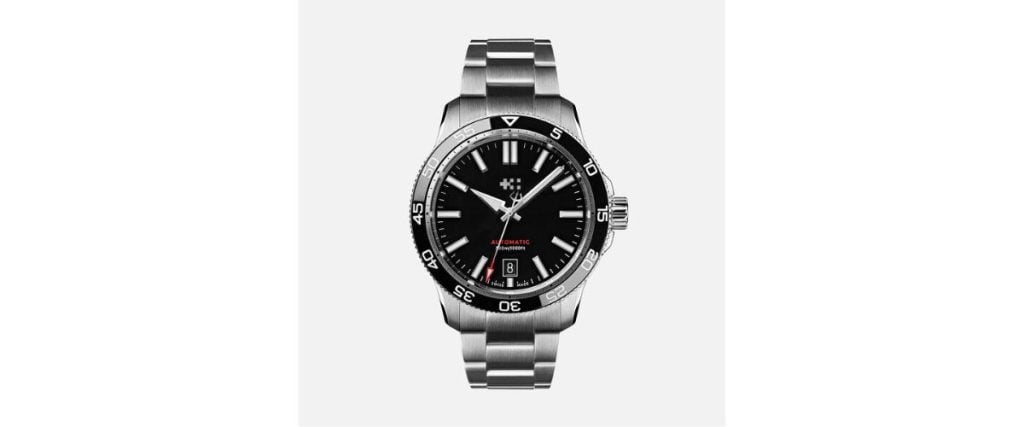
The Trident is Christopher Ward’s flagship dive watch, offering a balance of performance, style, and value. Among the standout models is the C60 Trident Pro 300, a reimagined classic designed for everyday versatility.
Slimmer and lighter than previous iterations, it features a two-part unidirectional ceramic bezel that delivers a precise, satisfying click. It’s also available in a range of sizes, including 38mm, 40mm, and 42mm, and four dynamic color options.
Another highlight is the C60 Trident Lumière, a more recent release that takes luminosity to the next level. Constructed from Grade 2 titanium, the case and bracelet exhibit a darker, more refined finish than traditional stainless steel, while the gradient dial features a new patented material Christopher Ward calls Globolight on the hour markers. These are ceramic blocks infused with Super-LumiNova that create a striking 3D effect, perfect for underwater legibility.
C1 Moonphase
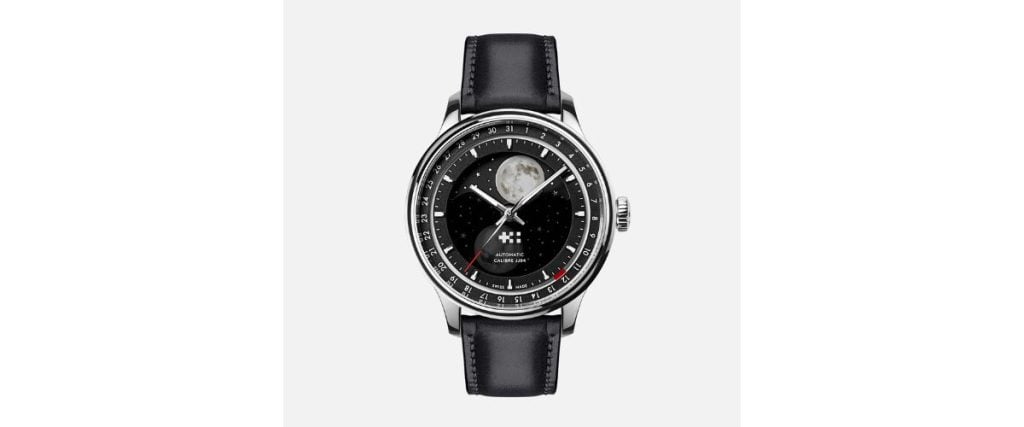
Another Christopher Ward watch many of you will likely be familiar with is their C1 Moonphase. This collection is inspired by the night sky’s celestial beauty, showcasing an aventurine dial crafted from aventurine glass infused with copper oxide.
The result is a display that sparkles like a starry night sky. The most notable part of the dial, though is the moon. Fashioned from Globolight, a ceramic and Super-LumiNova blend, the moon offers a breathtakingly accurate three-dimensional representation of the moon’s surface.
The C1 Moonphase is powered by Calibre JJ04, an in-house modular movement that links the moonphase to the hour hand for a seamless, perpetually moving display of lunar phases.
Remarkably accurate, it promises to track the moon’s journey for 128 years as long as you keep it wound. The rest of the watch has a beautiful minimalist approach, with the aventurine dial stripped of markers, indexes, and even the logo, allowing the moon and starry backdrop to take centre stage.
C63 Sealander
The C63 Sealander Collection is Christopher Ward’s answer to the call for a versatile, go-anywhere, do-everything sports watch.
With a sleek design rooted in English aesthetics and Swiss engineering, these watches are crafted from marine-grade stainless steel and feature shimmering sunray dials at the center.
With options in 36mm and 39mm, the ergonomically designed Light-catcher case fits snugly on the wrist, combining brushed and polished surfaces that play beautifully with the light (hence the name).
Turn the watch over, and the exhibition case back reveals the intricate workings of the Sellita SW200-1 automatic movement.
And for those who travel regularly, you’ll likely appreciate the C63 Sealander GMT, which adds an additional time zone hopping complication so you can stay connected to multiple time zones at once.
Super Compressor

Finally, a Christopher Ward watch that doesn’t get mentioned enough is the C65 Super Compressor. As a genuine super compressor watch, it features a unique mechanism that uses water pressure to enhance its seal, a hallmark of Ervin Piquerez SA (EPSA) cases from the 1950s. T
heir latest design in the series is their “Elite” version, which reimages their original with even better functionality.
At the heart of the C65 Super Compressor Elite is a COSC-certified version of the Sellita SW300-1 automatic caliber, placing it among the top six percent of Swiss mechanical movements for accuracy.
This precision is complemented by the decompression scale on the dial, box-shaped sapphire crystal glass and a sturdy 41mm cushion-shaped Light-catcher.
There are also twin crowns, one for controlling the internal rotating bezel and another for changing the time, both screwed in to ensure the 150-meter water resistance.
What Makes Christopher Ward Watches Stand Out?
When it comes to finding a watch that truly stands out, Christopher Ward has carved a niche that’s hard to ignore. As a fellow British watch enthusiast, I’ve always admired their approach to watchmaking.
They’re not just another brand in the sea of options but a small, independent British watchmaker that genuinely cares about quality and innovation. This makes their timepieces especially appealing to those of us who appreciate the finer details of horology.
One of the biggest things that set Christopher Ward apart is their use of in-house movements and materials.
While many of their movements are based on tried-and-true Swiss workhorses, Christopher Ward takes it a step further by integrating their own patented technologies like that seen in the Bel Canto or the C1 Moonphase.
Their Light Catcher case is another example and having worn several Christopher Ward watches with this design feature, I can confirm it has a beautiful, flowing architecture that enhances aesthetic appeal and wearability.
Quality is another cornerstone of Christopher Ward’s philosophy. They don’t compromise when it comes to materials or craftsmanship.
Whether it’s the Grade 5 titanium in the Bel Canto or the aventurine glass in the Moonphase collection, every component is meticulously chosen and expertly crafted.
And speaking of complications, their Bel Canto and Moonphase models are perfect examples of how they bring high-end features to insanely affordable prices.
To put it into perspective, the Bel Canto retails for just over $4,000, while a similar chiming watch from a brand like A. Lange & Söhne, such as the Zeitwerk Minute Repeater, can set you back over $450,000. That’s more than 100 times the price. But Christopher Ward isn’t cutting corners, they’re instead reimagining accessibility without sacrificing quality.
Christopher Ward is also known for their direct-to-consumer approach. They choose to bypass traditional retail models so they can bring high-quality timepieces available to a wider audience.
It’s a clever way to challenge the status quo and bring back transparency in watchmaking. In an industry often shrouded in mystery, Christopher Ward pulls back the curtain and instead shares insights into their manufacturing processes, material sourcing, and the true costs involved in creating each watch. This level of openness builds trust and makes you feel like you are part of their journey, not just a customer.
Should you get a Christopher Ward Watch?
Deciding whether to invest in a Christopher Ward watch depends on what you’re looking for in a timepiece and where your priorities lie. As I’ve hopefully explained, this British watchmaker has done a great job at balancing quality, innovation, and affordability so honestly, there’s a good chance you’ll find something to suit your needs.
In particular, Christopher Ward caters to those who appreciate independent brands and value both design and function.
If you’re someone who admires the craftsmanship of luxury timepieces but finds their prices daunting, Christopher Ward offers an excellent alternative. They’re perfect for enthusiasts who want high-quality materials, innovative features, and Swiss-made movements without paying a luxury premium.
Their appeal also extends to people who enjoy technical ingenuity. The brand is renowned for creating affordable watches with complications that would typically come with astronomical price tags. Not to bring up their Bel Canto again, but a chiming watch that retails for just over $4,000 is unheard of. It delivers a complication so rare that its closest competitors cost thousands more.
Of course, while Christopher Ward offers a lot, they may not be the right fit for everyone. Traditionalists who seek a storied heritage or brand prestige might lean toward household names like Rolex, Omega, or Patek Philippe.
Christopher Ward, being a relatively new and independent British brand, doesn’t carry the same legacy or cultural cachet. If owning a watch from a brand with centuries of history is important to you, this might be a dealbreaker.
But if it was me, I wouldn’t hesitate to choose a Christopher Ward for my collection. In fact, I have several, and I’m currently wearing my The Twelve 36 while writing this article.
Their watches have yet to let me down, and I’ve found them to be an excellent choice if you want that luxury feel without the luxury price tag. They also have a wide range of styles, case sizes, complications, and dial colors to choose from, so you’re guaranteed to find something to suit your taste.
Conclusion
It might have taken twenty or so years to have heard of their name, but I truly believe Christopher Ward to be a watchmaker worth keeping an eye on. From their humble beginnings in a chicken shed to winning international acclaim, they’ve proven that luxury doesn’t have to come with a six-figure price tag.
This is a brand for those who value quality and innovation over flashy logos, who appreciate transparency in a traditionally secretive industry, and who want a watch that tells a story as much as it tells the time. Their ability to combine cutting-edge complications with affordable pricing is difficult to compete with and they are a watchmaker I wouldn’t hesitate to recommend to you, or anyone else.
So, should you get a Christopher Ward watch? If you’re ready to embrace independent and affordable watchmaking at its finest, the answer is a resounding yes.


